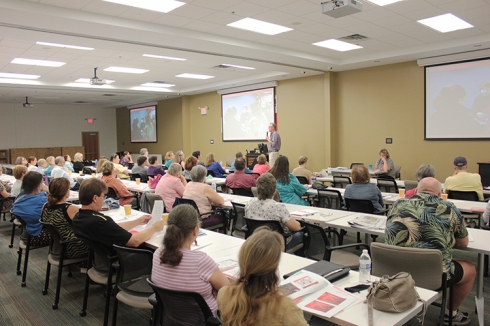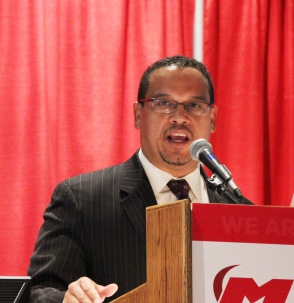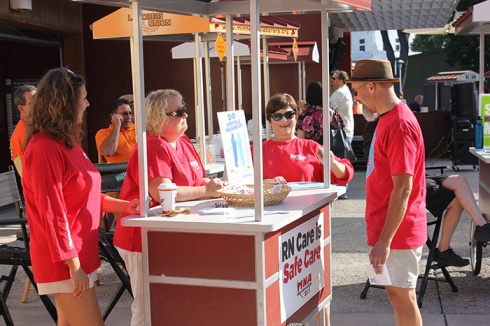Back in 2008, a lot of working folks planning for retirement saw their savings dwindle. Some saw their net worth spiral downward pretty quickly. For example, someone who had to invest in a 401(k) retirement fund opened statements to see that a savings of $10,000 had dwindled to $7,000. Those that could wait have been riding out their disappointment (as well as not opening their retirement savings notices anymore). Only now, five years later, are they starting to see their nest egg return to its pre-recession figures. Of course, anyone who needed to retire in 2008 had to cash out for pennies on the dollar.

Nurses listening to the latest figures on their pension fund.
Nurses, who are vested in the Twin Cities Hospitals-MNA pension, (or worked for Hennepin County Medical Center or the State of Minnesota) didn’t have to worry. Their retirement benefits continued at the amounts they had earned while their employer had to pay up to ensure the solvency of the pension fund account. The risk was and still is on their employer to maintain the success of the fund that will pay them through a nurse’s golden years.
At an MNA pension workshop presented by MNA staff on Tuesday, Twin Cities’ MNA nurses learned that their pension fund is alive and well. Auditors looked hard at the fund and found three key attributes found in not very many other retirement funds (including other pensions).
- More nurses are coming into the pension fund than are retiring. So the fund is growing rather than shrinking as nurses retire.
- The fund is seeing healthy contribution levels to maintain and grow the balance of the fund.
- The fund is heading back into the safe or “green zone” where auditors would like it to be, probably within 1-2 years.
In addition, pension plan assets are up as of the end of the year 2012, and that means that benefit payments as a percent of contributions are down. That’s good news for the sustainability of the plan.
Nurses become vested in the pension plan after working five years with at least 1000 hours of service, which means a new nursing graduate could guarantee him or herself a pension benefit to retire on in just five years. That’s even if they end their nursing career soon after that.

Nurses filled the room to hear about why they should protect their pensions.
Because no one can outlive their pension benefits, the total worth of their retirement benefits will be more. For example, nurses who live 18 years beyond their actuarial life expectancy will see the worth of their lifetime payments double since they began receiving benefit payments. Retirees living longer on 401(k) proceeds will have to figure out how to stretch their dollars as their net worth will become stagnant.
The nurses’ pension plan is a gold mine in a valley that’s been dug by a lot of prospectors. Nurses should feel safe that their mine will keep paying off while others will be digging for security.













